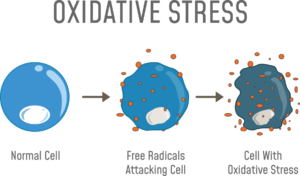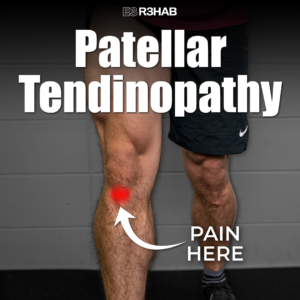Training hard, pushing limits, and embracing the grind—athletes know what it takes to excel. But beneath the surface of those grueling workouts and intense competitions, a silent battle rages within their bodies: oxidative stress. This biochemical tug-of-war, fueled by the very act of exercising, can challenge even the fittest of athletes. So what is oxidative stress, and why should athletes pay attention? Let’s dive deep into the causes, consequences, and strategies to manage this hidden threat, including the role of electromagnetic fields (EMF).
What Is Oxidative Stress?

At its core, oxidative stress occurs when there’s an imbalance between the production of free radicals and the body’s ability to neutralize them with antioxidants. Free radicals, while often seen as harmful, are actually a natural byproduct of metabolic processes, particularly those ramped up during intense physical activity. However, when free radicals outnumber antioxidants, oxidative stress occurs, leading to potential damage to cells, proteins, and DNA.
The Role of Exercise in Oxidative Stress
Exercise, especially at high intensities, is a double-edged sword. On one hand, it’s essential for improving fitness and performance; on the other hand, it significantly increases oxygen consumption, leading to a rise in free radical production. Studies have shown that extreme endurance exercises can elevate markers of oxidative stress, indicating that athletes engaging in long-duration or high-intensity workouts are particularly susceptible.
Causes of Oxidative Stress in Athletes
Environmental Factors
Beyond physical exertion, athletes are exposed to various environmental factors that can exacerbate oxidative stress. Pollution, UV radiation, and poor air quality are well-known contributors. However, a less obvious but equally significant factor is exposure to electromagnetic fields (EMF), particularly from electronic devices and Wi-Fi. Research suggests that EMF exposure can increase the production of reactive oxygen species (ROS), further tipping the balance towards oxidative stress.
Nutrition and Diet
An athlete’s diet plays a crucial role in either mitigating or exacerbating oxidative stress. Diets high in processed foods, sugars, and unhealthy fats can contribute to an increase in oxidative stress, while diets rich in antioxidants—found in fruits, vegetables, nuts, and seeds—can help combat it. Understanding the nutritional needs and incorporating antioxidant-rich foods is a must for managing oxidative stress.
Psychological Stress
Mental and emotional stress can be just as taxing on the body as physical exertion. Stress triggers the release of cortisol, a hormone that, when chronically elevated, can lead to an increase in oxidative stress. Athletes dealing with the pressures of competition, personal challenges, or inadequate recovery time are at risk of heightened oxidative stress due to this mental strain.
The Connection Between Oxidative Stress, Apoptosis, and Inflammation

One of the most concerning aspects of unchecked oxidative stress is its connection to apoptosis (programmed cell death) and chronic inflammation. While apoptosis is a normal part of cellular turnover, excessive oxidative stress can lead to excessive apoptosis, particularly in tissues like tendons that are already under heavy load from physical activity. This has been observed in athletes suffering from conditions like patellar tendinopathy, where increased oxidative stress and apoptosis contribute to tissue degeneration.
How Oxidative Stress Affects Recovery and Performance
Impaired Muscle Recovery
Oxidative stress doesn’t just stop at causing cellular damage; it also plays a significant role in slowing down muscle recovery. After intense exercise, the body’s natural response is to repair and rebuild muscle tissues, a process that can be hindered by excessive oxidative stress. This not only prolongs recovery time but can also lead to overtraining syndrome, where the body is unable to fully recover between workouts, leading to a plateau or even a decline in performance.
Increased Injury Risk
Athletes under constant oxidative stress are also more prone to injuries. The connection between oxidative stress and weakened tendons, muscles, and ligaments means that these tissues are more susceptible to strains, tears, and overuse injuries. The increased apoptosis in tendinopathic tissues, as previously mentioned, is a direct example of how oxidative stress can lead to chronic injury problems.
Strategies to Combat Oxidative Stress
Optimize Nutrition
Prioritize Whole Foods: Base your diet on nutrient-dense, whole foods that support recovery and reduce inflammation.
High-Quality Animal Proteins: Include organic, grass-fed, and pasture-raised meats, wild-caught fish, and pasture-raised eggs to provide essential amino acids and healthy fats.
Healthy Fats: Opt for sources like grass-fed butter, tallow, unrefined coconut oil, and organic extra virgin olive oil. These fats support cellular health and energy production.
Carbohydrates from Whole Sources: Favor fruits, starchy vegetables, and fermented foods to provide energy and gut health benefits without causing oxidative stress.
Avoid Processed Foods and Seed Oils: Eliminate processed snacks and foods made with inflammatory seed oils, which exacerbate oxidative stress and inflammation.
The Problem with EMFs and Oxidative Stress
Electromagnetic fields (EMFs) have become an invisible disruptor in an athlete’s environment. By penetrating tissues, EMFs interfere with the body’s electrical signaling, leading to physiological stress. This can compromise vital functions such as testosterone production, brain health, and gut integrity—all essential for peak performance and recovery.
Testosterone Disruption: Prolonged EMF exposure has been linked to reduced testosterone levels by affecting Leydig cells in the testes, hindering muscle growth and repair.
Blood-Brain Barrier Weakening: EMFs may compromise this protective barrier, allowing harmful substances to enter the brain, increasing inflammation, and potentially impacting cognitive function.
Gut-Brain Axis Damage: The gut, critical for nutrient absorption and immune health, can suffer from EMF-induced microbial imbalances, leading to systemic inflammation and impaired recovery.
Aires Tech: A Solution for Athletes
Minimizing EMF exposure is crucial for managing oxidative stress and maintaining critical physiological functions. Aires Tech provides advanced EMF protection tailored to the needs of high-performing individuals. Here’s why it’s a game-changer for athletes:

UFC fighter Michael Chandler protecting his brain from oxidative stress by using a Lifetune One on his wireless headphones. Save 25% on Aires Tech with code “MOL”. Protects Hormonal Balance: Aires Tech devices help reduce EMF-induced disruptions, supporting healthy testosterone levels.
Supports Brain Health: By mitigating EMF effects, Aires Tech aids in preserving the integrity of the blood-brain barrier, reducing inflammation and oxidative damage.
Enhances Recovery: Aires Tech shields promote a balanced environment for cellular repair, boosting overall recovery and performance.
By incorporating Aires Tech solutions into their daily routines, athletes can focus on training and recovery without the silent interference of EMFs.
Stress Management Techniques
Incorporate practices such as:
Meditation: Reduces cortisol levels and promotes relaxation.
Breathwork: Enhances oxygen utilization and reduces stress.
Sleep Hygiene: Prioritize quality sleep for optimal recovery.
Strategic Recovery Practices
Active Recovery: Gentle activities like yoga or swimming can improve blood flow and reduce oxidative stress.
Cold Therapy: Ice baths and cold showers help reduce inflammation and oxidative damage.
Compression Gear: Promotes circulation and reduces stress on tissues.
Supplementation and Adaptogens
Adaptogens: Herbs like ashwagandha and Rhodiola rosea help the body adapt to physical and psychological stress.
Omega-3 Fatty Acids: Found in fish oil, these combat inflammation and oxidative stress.
Conclusion
Oxidative stress is an inevitable part of athletic life, but it doesn’t have to be a limiting factor. By understanding the causes and consequences of oxidative stress, athletes can take proactive steps to manage its effects and protect their bodies from its harmful impact. Whether through diet, supplementation, EMF protection, or stress management, there are numerous strategies available to keep oxidative stress in check.
As the science of sports and recovery continues to evolve, staying informed about oxidative stress and how to mitigate it will be crucial for athletes who want to maintain their edge and longevity in their chosen sport. By taking a holistic approach to managing oxidative stress, athletes can continue to push their limits, recover more effectively, and achieve their goals without compromising their health.








